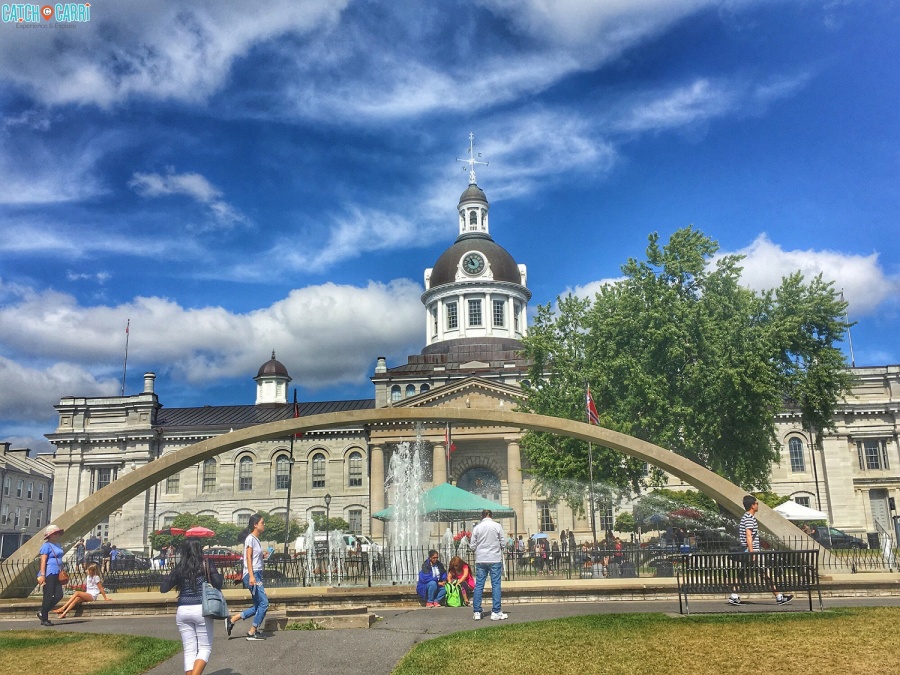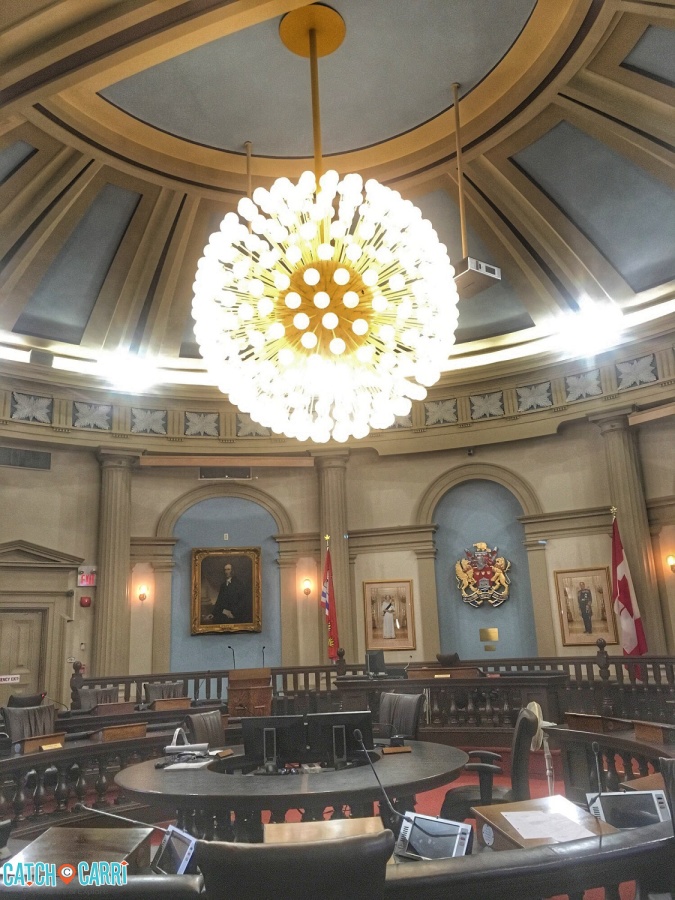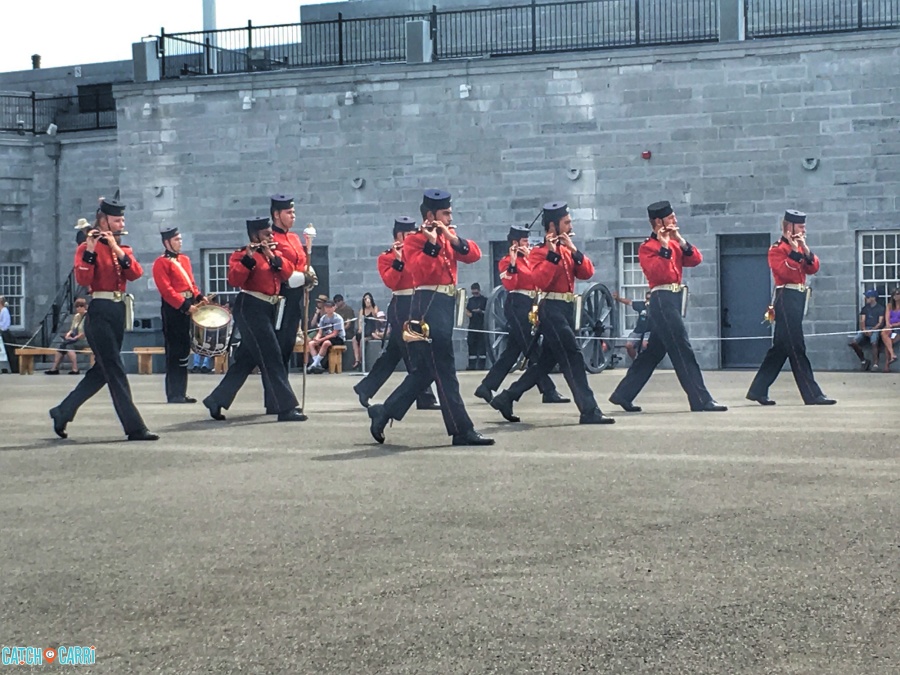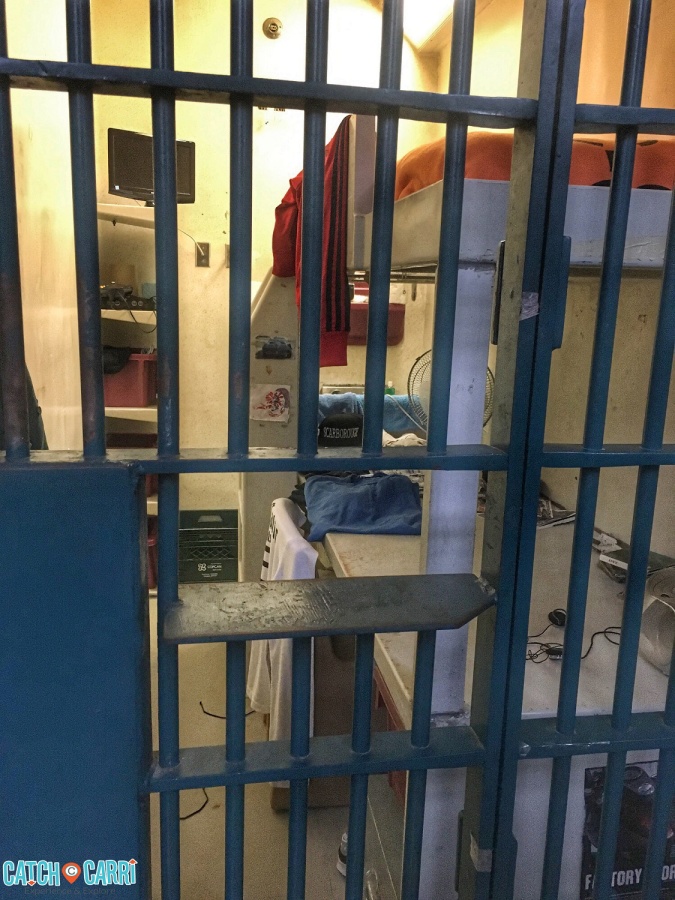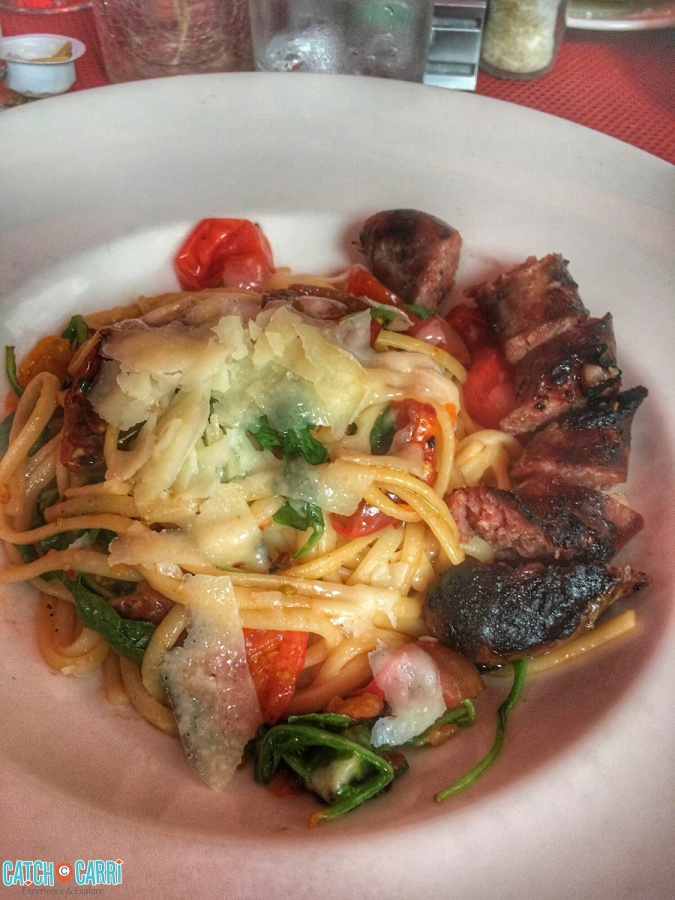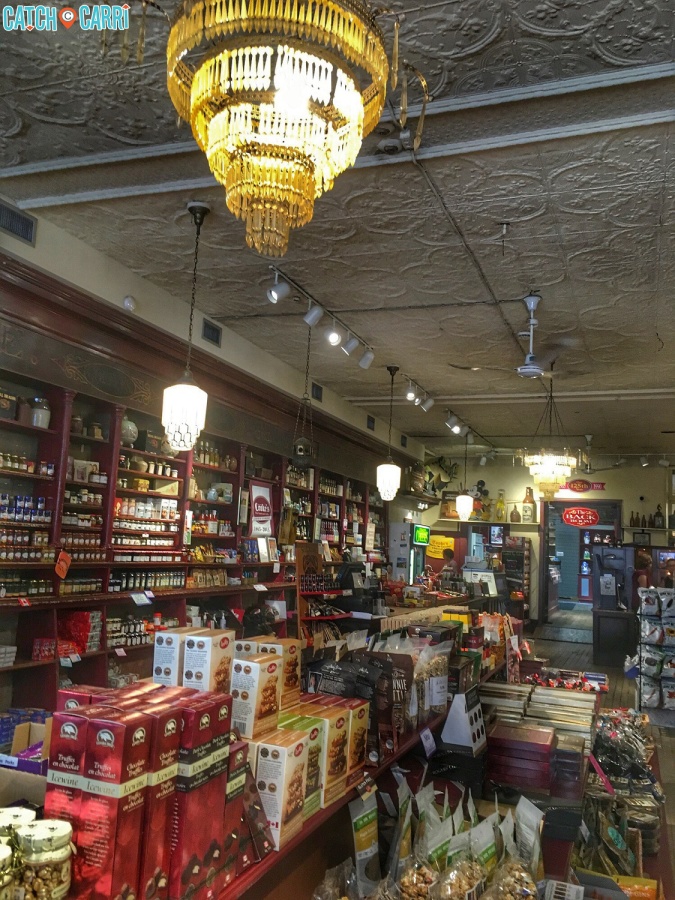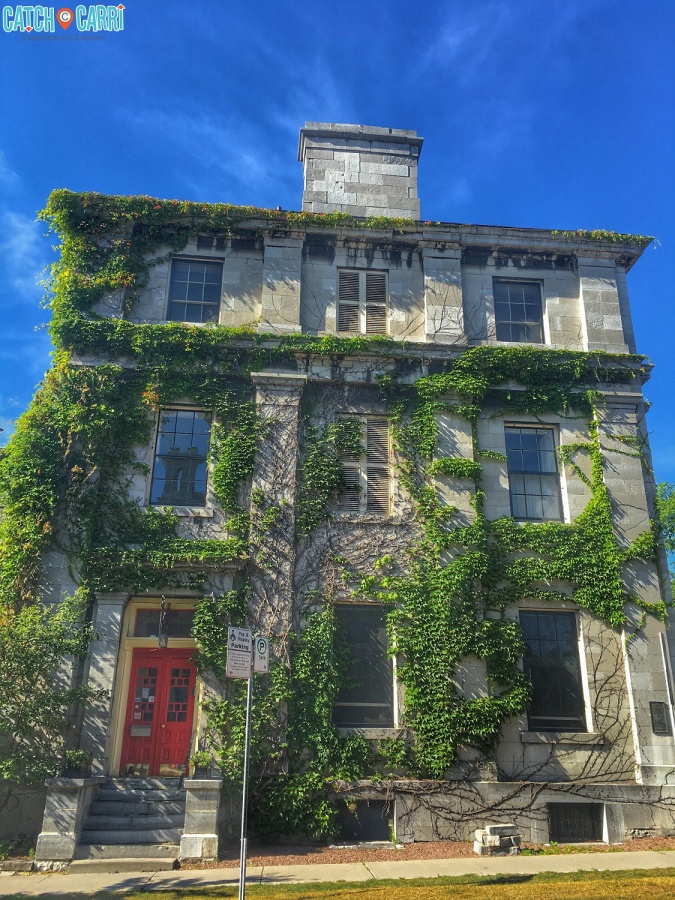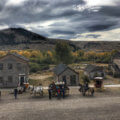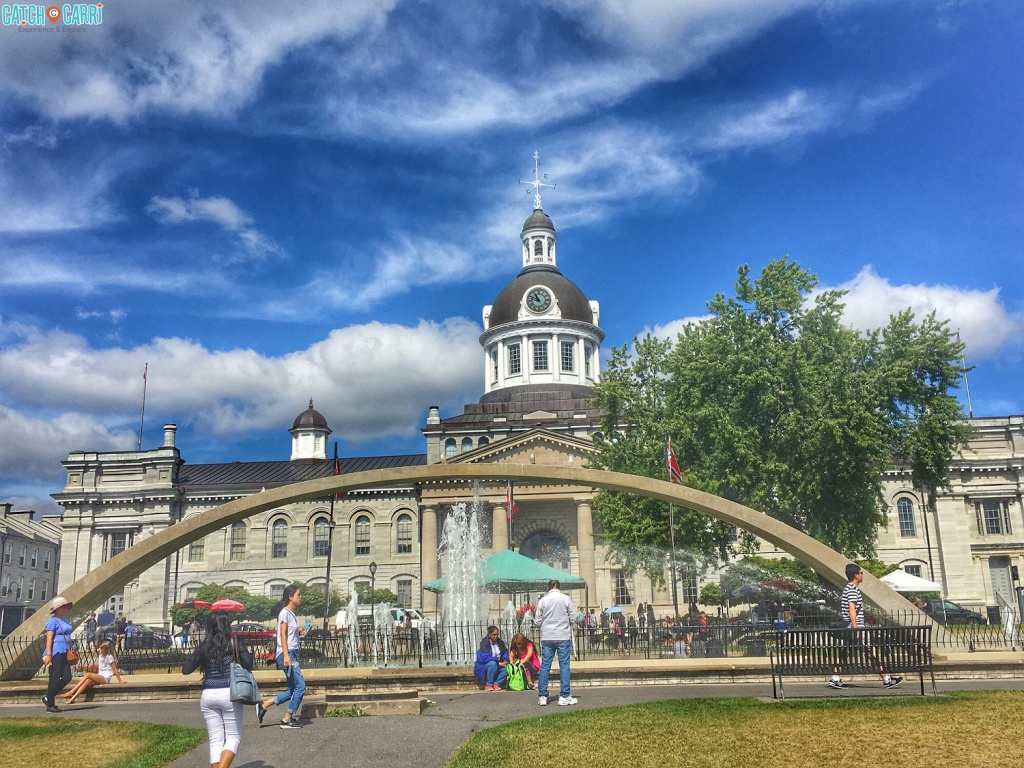
7 Ways to Make the Most of Your Trip to Kingston, Ontario
Just take a few steps into downtown Kingston, Ontario and you’ll instantly know you are in a city filled with history. Originally a French trading post dating back to the late 1600s, Kingston later served as modern-day Canada’s first capital city in 1841, although this only lasted three years. Kingston had originally been chosen for its location at the confluence of the Rideau Canal, the Saint Lawrence River and Lake Ontario, but it wasn’t long before it was decided the area was too to close to the American border (from here it’s just over 2 hours to Syracuse, NY), which made it vulnerable to attacks. Today, the city’s history remains palatable: City Hall sits across from a waterfront park packed with tourists looking across the water towards the Royal Military College of Canada and Fort Henry. But it is also a place with a youthful vibe about it, especially in spots like Queen’s University, which is just blocks from Downtown.
Here are seven ways to make the most of a Kingston trip.
1. Meet the Town Crier
It takes a city with a far reaching history to have a Town Crier, but in Kingston, Chris Whyman has been keeping the old-fashioned style alive for the last 32 years, donning a red and gold coat, black boots, a tricorne hat and of course a handbell to ring before an announcement. Criers were the original news teller of the 18th century, announcing proclamations and serving as an ambassador. Today, you may spot Chris at the visitor information center housed in an old train depot. Along the way he has met Queen and Prince Phillip, Princess Diane and Prince Charles. He knows the city’s history back to front from French rule to British and has a scribe of interesting stories to share.
2. Tour the Inside of the City Hall
As grand as the outside is, don’t miss a chance to take a guided tour inside City Hall to learn about the original uses of the building. There was once a market on the lower level, where farmers would drop off produce for people to buy and also house livestock like pigs and cows towards the back of the building. An architectural dig was done in the area and uncovered things like plates and utensils that are on display. The building was also the city police station in 1841. The area is now a museum where you can see inside the cells where people were once held.
When City Hall was being restored in 1973, all kinds of little hidden gems were found. In the council chambers, a chandelier, which represented the 300 years of Kingston, and being 1973, it was studded with 373 globe light bulbs in a very 70’s style.
3. Experience the Architecture
Right away, I took to Kingston’s architecture that has steered away from modern design and has focused on restoring historic structures. You will notice building after building made of limestone, a resource that comes natural to the area because the city sits on a limestone plateau. There are hundreds of quarries where stone was used to construct areas that are now shops and restaurants downtown, several churches, City Hall and Queen’s University. There is also a fair amount of brick used that was brought over as ballast in ships coming from Europe to pick up furs, pelts and lumber. The bricks were dumped on shore and local merchants would grab them to save money on building costs. But its far from just brick and limestone, keep and eye our for colorful and ornate Victorian homes that are tucked away on side streets.
4. Tour Fort Henry
Make a visit to the restored British fortification of Fort Henry different by shooting the Snider Enfield Rifle- the first rifle that loaded from the back of the barrel. In this case you only fire gunpowder (thank goodness no kickback), but still get the feeling of the advancement in weaponry for that time.
Soldiers were stationed here from 1812 to 1891 but interpretive staff has chosen to portray the year 1867, which is when Canada first became a nation. On a visit you don’t want to miss seeing inside different museum rooms that show everything from the difference in rooms from a common soldier to officers. You can also see school rooms set up for the children of soldiers and underground to the Reverse Firing Chambers where a tunnel leads to a dry ditch where soldiers could fight back with a cross fire. You can also see the Fort Henry Guard perform military drills and the Garrison Parade, complete with the fife and drum here.
The Fort sits atop Point Henry and served to protect the entrance to the Rideau Canal that carried supplies from Montreal and Ottawa as well as the town of Kingston. Later on, the Fort was used an interment camp for political prisoners, then abandoned and later resorted in 1936 and opened as a museum in 1938.
5. See Inside Kingston Penitentiary
Canada’s most notorious criminals were locked up inside this maximum-security prison’s grey limestone walls. British North America’s first penitentiary when it opened in 1835, Kingston Penitentiary‘s location was chosen for its proximity to a military base and Lake Ontario. Although the base is no longer operational (it closed in 2013 because of maintenance costs) today you can explore on a 90-minute tour.
You will see behind the walls and into some of 154 cells that were separated into 5 tiers, and shaped like a cross, to encourage healing of inmates. During the tour, guides are stationed in different spots and the coolest part is that several of them worked at the Pen, some as correctional officers, and another as a keeper (someone was is in charge when the warden is out).
During the tour, expect to hear about three riots, the worst of which lasted four days in 1971 and involved six guard hostages, two dead inmates and a wing that was damaged so badly it never reopened.
You’ll also see inside inmate cells, most of which have been gutted. But others have been restored to show what a typical cell would like, which included things like TV’s and gaming units in cells. Take a peek through the bars and you will see handwriting from inmates on the walls. You’ll also see the segregation area where inmates were locked in for 24 hours a day, but unlike some in the US, there was natural light and inmates were allowed one hour outside in a small-enclosed area. They spent most of their day reading, sleeping and doing schoolwork.
6. Taste Local Flavors
Grab a spot on the courtyard patio at Chez Piggy for dinner, a space that was once a limestone stable. One of the owners, Zal Yanovsky, of the 1960s group Lovin’ Spoonful (hint: Do You Believe in Magic?) opened the restaurant but it’s now operated by his daughter.
Start with the baby spinach salad, served with halloumi and topped with a honey pomegranate dressing. For a veggie option, try the Linguini Aglio Olio topped with tomato, dried chili, arugula and Parmesan. Not a vegetarian? Add the house made sausage, which adds some protein while still keeping the simplicity of the dish. Here you also can’t go wrong with the seafood. No matter the dish, pair it with an Ontario wine.
Tango Nuevo is another great spot for dinner, served tapas style. Don’t miss the Roasted mushrooms, roasted in garlic and white wine sauce. Or, the Fish Tacos with spice rubbed red snapper, red cabbage slaw and a slightly spicy cream. The environment is quintessentially Kingston- the structure is limestone but brightened up with modern décor.
7. Explore Downtown
The downtown waterfront is the perfect place to enjoy a picnic and Pan Chanco bakery is the perfect place to pick it up. The same team that opened Chez Piggy runs the European style bakery. Inside you will find fresh baked breads, desserts, pastries, local cheeses and grab and go deli items. There is also a cafe attached if you are looking for a sit down meal.
Stop in Cooke’s Fine, which has been open since 1865, to see the Victorian décor. The shop serves both local and also fine foods imported around the world. The floors and counters are original and make sure to look up at the tin roof and eclectic light fixtures hanging from the wall. The street that Cooke’s is on is called the Brock Sreet Common and features some of the most notable architecture downtown.
Where to Stay: Frontenac Club Inn
When I am traveling, I always look for a place to stay with history. This upscale boutique bed and breakfast was built in 1845 as a bank, then served as a private men’s club in 1903. Today, the rooms are outfitted with modern touches with each decorated in it’s own unique style with shades of bright colors that stand out against the limestone walls.
Breakfast is one of my favorite parts about the stay. French music plays overhead and friendly staff serves breakfast in three courses with your choice of an Irish style oatmeal or yogurt with fruit and Granola. The main course varies with different options like a fancy French toast or my favorite, eggs Frontenac with smoked salmon and tomatoes. You can choose to sit in the main part of the dining room facing an open style kitchen, or a dining room tucked away. You also don’t want to miss a chance to relax in one of the colorful chairs in an flowery outdoor patio area.








